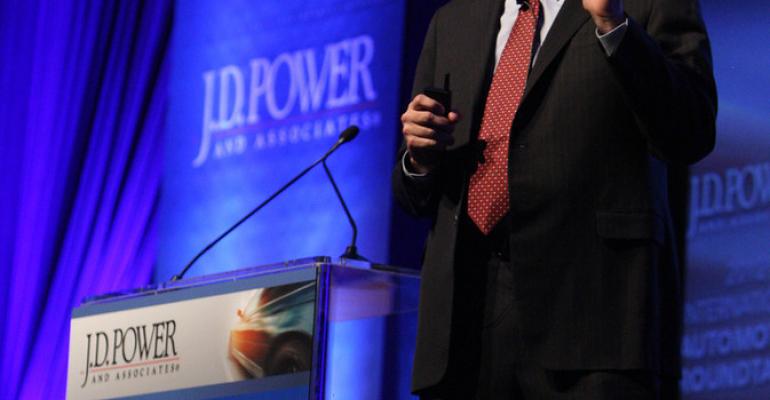LAS VEGAS – U.S. car dealers will need higher per-unit margins if they are to survive and prosper in the new retail climate that is putting increasing pressure on vehicle prices, says Earl Hesterberg, president and CEO of megadealer Group 1 Automotive.
“Vehicle margins need OEM support,” he tells the J.D. Power International Automotive Roundtable here that precedes the opening of the National Automobile Dealers Assn. convention.
New-vehicle sales make up 50%-55% of dealer revenues but only 20%-25% of the profits. That’s because vehicle margins, now below 2005 levels, are too low, he says.
Group 1, which has a wide-ranging mix of brands, including several luxury-vehicle franchises, averaged a 6.2% profit margin last year, Hesterberg reveals, outperforming the 4.6% average for the industry overall.
“OEMs have reduced margins over the past three years,” he says, blaming some of those cuts on the weakened euro and yen that have cut profits for German and Japanese auto makers in the U.S.
But there also has been a philosophical shift at OEMs, which now put more emphasis on financial rewards for achieving certain customer-satisfaction-index scores and hitting monthly volume targets.
“So there’s less trading margin to make a deal,” Hesterberg says.
Also squeezing dealer margins is the market swing to lower-priced cars from more lucrative trucks, he adds. Then there is the Internet, which is arming customers with detailed pricing information that enables them to drive a harder bargain.
Hesterberg points to the slim margins on some popular small cars, such as the Nissan Versa ($423), Honda Fit ($414), Ford Fiesta ($255) and Chevrolet Cruze ($586). Subtract the dealer’s advertising cost ($300) and sales commission ($100-$125) and there’s not much left, he says.
Even with additional financial incentives auto makers offer, “none of these get to $1,000” margins. That’s not going to get anyone to the Promised Land.”
Some 14% of shoppers owe more on their trade than it is worth, and the slim profits make it difficult to sell them a new vehicle, Hesterberg points out.
“The OEMs would love to convert these people to new-car buyers,” he says. “But what can I do when I have a $400 margin on a new car?”
Dealers have responsibility to improve their own productivity, hire quality people and provide proper training, Hesterberg says.
But they also need some help from auto makers. He points to a new program by BMW to stock 5-Series models for retailers, cutting their inventory costs, as one way OEMs might improve the business model for dealers.
He also calls on auto makers to eliminate unique requirements for computer systems and websites and cut back on expensive facility-upgrade programs. “OEMs need to support the lowering of fixed costs for dealers.”
Hesterberg says a 7%-per-unit profit at Group 1 would be reasonable, admitting margins are looking a little better for 2012 as the vehicle mix improves and Toyota and Honda, stricken last year by the tsunami in Japan and flooding in Thailand, replenish inventories.
Fewer new-vehicle showrooms also would help profitability.
“There are still too many dealers,” Hesterberg says, noting the limited success General Motors and Chrysler had in paring back ranks during their 2009 bankruptcies. “Now it will be Darwin that takes over.”



